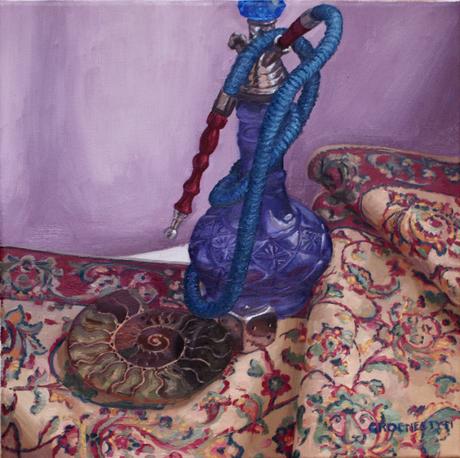
Post Conrad © Samantha Groenestyn (oil on canvas)
I have a theory about the collecting of art. People want to use their money to express something about themselves. Now that lots of things are cheaply and conveniently available, people would like to find more individual ways to express their interests and tastes. Handmade things are a sure way to assert ones individuality, and, in a world of convenience, our generation in particular is bending over backwards to source original and limited items, if not fashioning them themselves.
Art seems like the best candidate for such selective spending, but I believe two mental obstacles hinder people spending money on it. Firstly, there is the reluctance to spend large amounts of money all at once. And secondly, there is the mental block of seeing art as a luxury good. Even smart shoes, however smart, evade this block by having some instrumental value. And nice furniture, equally instrumental, softens the blow of its price tag by being available to buy in installments. Artists need to address these two obstacles if they are to subsist from their job as from any other job.
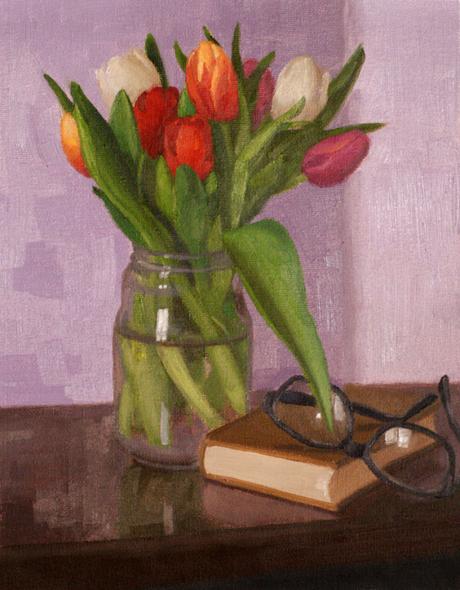
Tulpen (oil study)
First of all, art need not be considered a luxury item. And, I would wager, people are not so taken with scattered and individual paintings, but become interested in the person behind them. Even when people buy a painting as though it were a product, to decorate their apartment and to express something about their own personality, it brings them satisfaction to think of the role they have played in the painter’s path to greatness. In that transaction, two paths intertwine, at least momentarily, and the buyer becomes part of the fabric of the painter’s life. The buyer learns that they are enabling someone to work, not satiating their own unjustified whim for luxury objects. I feel very strongly that this side to buying art should be recognised and emphasised in the midst of our consumerist haze of acquisition.
Secondly, art need not be out of reach. Even the artist doesn’t buy all her materials at once, but spaces it out. Imagine if you could set aside a small amount of money per month, slowly building up a tab, and at the next show you were automatically entitled to a painting—or more than one. You would be invited to the exhibition, drink some wine and partake in some pleasant conversation. Perhaps you had chosen your favourite painting long ago, and knew you were going home with it well in advance, because as a collector you have been in private communication with the painter, and aware of her doings. As time wears on, the painter—now at liberty to work—finds her rhythm and grows in prowess. Her paintings are not objects in a marketplace. They already belong to you and to others in a supportive elite. The party is for you.
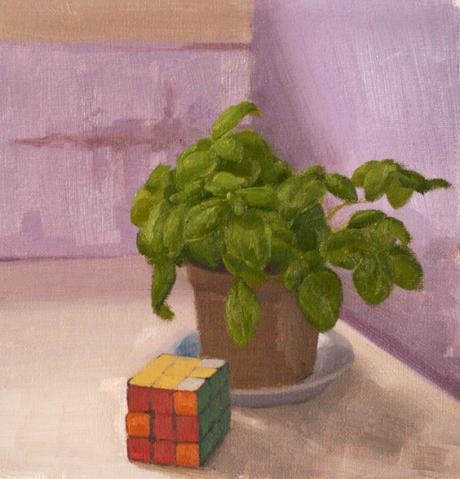
Basilikum (study; oil on canvas)
At my forthcoming show, nothing will be for sale. I don’t want you to come to buy pictures, but to look at them, because paintings are for looking at. I hope this will be a breath of fresh air to art-lovers. I’ve certainly heard enough of the ear-grating rattling of tin cans at art shows, echoing the desperation of beggars in the street. The reason none of my work will be for sale is that it already belongs to people: my collectors. Rather than buying single paintings (under time limits, social pressures and the influence of alcohol), my collectors understand that a long-term solution to my being able to work is to support me. Not to think of my work as products, but to think of me as a worker.
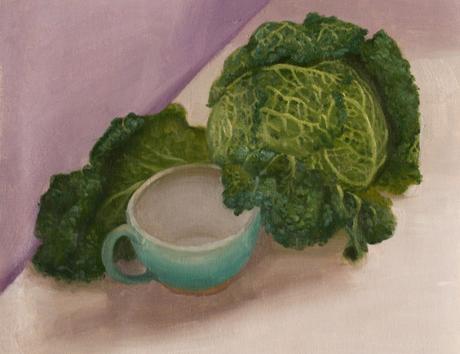
Kohl (study; oil on canvas
And so my collectors just make sure I have a roof over my head and something to eat. I don’t think this is a revolutionary idea, but I think it’s one that has become obscured in the current climate in which we trade heavily in products. Yet it shouldn’t sound so foreign, since most people are working in jobs where they are paid for their time. Some of my collectors send me money each month. Some of them let me stay with them for months at a time. Rents are paid, needs are met, worries are eliminated. And I happily carry on painting. And the paintings have homes, because in a sense they are bought in advance.
Should this idea interest you, and should my work and my ongoing ability to produce it delight you, you need only write to me. No campaigns with time-limits, no alcohol, no third parties, no commission. Only an arrangement between a discerning individual and a hardworking painter.
And to my existing collectors: thank you for being a part of the fabric of my life.
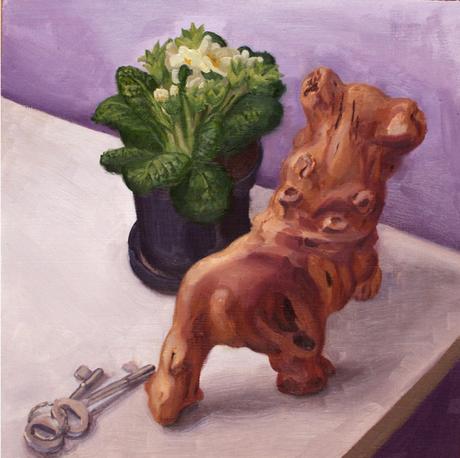
Flusspferd (study; oil on board)

